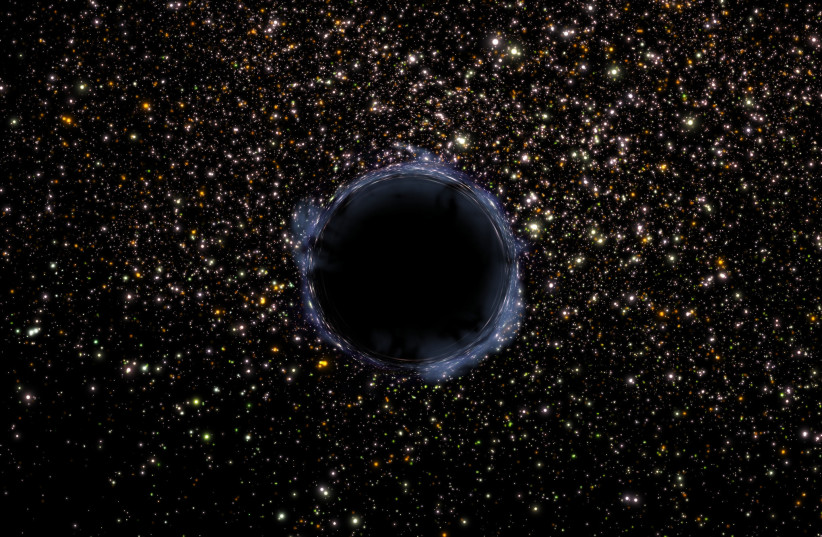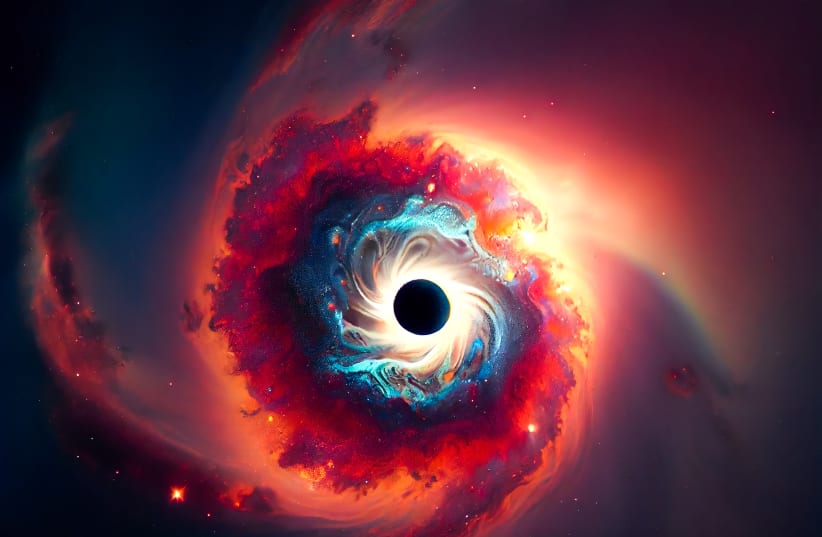Supernovae give rise to black holes or neutron stars, finds Israeli-led team
The connection was long suspected, but the direct link was elusive until now.
Scientists at the Weizmann Institute of Science in Rehovot who led an international team have found a direct link between the explosive deaths of massive stars called supernovae and the formation of the most compact and enigmatic objects in the Universe – black holes and neutron stars.
Supernovae form when a very massive star (at least 25 times heavier than our Sun) runs out of nuclear fuel. The star then explodes as a supernova. What remains is a black hole, usually only a few times heavier than our Sun since the explosion has blown much of the stellar material away.
A supernova is created during the last evolutionary stages of a massive star or when a “white dwarf” – what stars like the Sun become after they have exhausted their nuclear fuel. Near the end of its nuclear burning stage, this type of star expels most of its outer material, creating a planetary nebula. is triggered into runaway nuclear fusion. The original object, called the progenitor, either collapses to become a neutron star or a black hole or is completely destroyed to form a diffuse nebula. The peak optical luminosity – the total amount of electromagnetic energy released per unit of time by a star, galaxy, or other astronomical objects – of a supernova can be comparable to that of an entire galaxy before fading over several weeks or months.
The last supernova directly observed in the Milky Way was Kepler's Supernova in 1604, appearing not long after Tycho's Supernova in 1572. Both of them were visible to the naked eye. The remnants of more recent supernovae have been found, and observations of supernovae in other galaxies suggest they occur in the Milky Way on average about three times every century. A supernova in the Milky Way would almost certainly be observable through modern astronomical telescopes. The most recent naked-eye supernova was SN 1987A, which was the explosion of a blue supergiant star in the Large Magellanic Cloud, a satellite galaxy of the Milky Way.
With the help of the European Southern Observatory’s Very Large Telescope (ESO’s VLT), an international team led by the Weizmann astrophysicists was able to observe the aftermath of a supernova explosion in a nearby galaxy, finding evidence of the mysterious compact object it left behind. The study has just been published in the prestigious journal Nature.

A missing link found, at long last
“Researchers have long believed that a compact remnant is produced at the center of a massive star explosion,” said the study’s lead author Dr. Ping Chen, a postdoctoral fellow in the lab of Prof. Avishay Gal-Yam at Weizmann’s particle physics and astrophysics department. “But a direct link between supernova explosions and newly formed compact objects has been elusive. In this work, we establish such a direct link.”
When massive stars reach the end of their lives, they collapse under their own gravity so rapidly that a violent explosion known as a supernova ensues. Astronomers believe that after all the excitement of the explosion, what is left is the ultra-dense core – or compact remnant – of the star. Depending on how massive the star is, the compact remnant will either be a neutron star – an object so dense that a tablespoon of its material would weigh as much as Mount Everest – or a black hole, an even denser object from which nothing, not even light, can escape.
But while astronomers had found many clues hinting at this chain of events in the past, direct evidence of a supernova leaving behind a compact remnant has been elusive.
The team’s lucky break came in May 2022, when the supernova SN2022jli was discovered in the spiral arm of a nearby galaxy, NGC 157, located 75 million light-years away. By turning their attention to the fallout of this explosion, the scientists were able to find the link connecting a supernova to the compact object it left behind — all thanks to a companion star.
Most massive stars are in orbit with a companion star in what is known as a binary system, and the star that caused SN 2022jli was no exception. Remarkably, the companion star survived the violent death of its partner, so that this star and the left-over compact object kept orbiting each other, an unusual occurrence after such a powerful explosion.
“In this work, we observed a newly formed compact object and its companion,” Chen says. “For the first time, we see how the newly formed neutron star or black hole interplays with its companion.”
This interplay was spotted in the form of periodic movements of hydrogen gas and of regular fluctuations in the system’s visible brightness, with bursts of gamma-rays also detected. The observations were made possible thanks to a fleet of instruments on the ground and in space, including X-shooter on ESO’s VLT in Chile’s Atacama Desert.
Putting these clues together, the team found that when the companion star interacted with the material thrown out during the supernova explosion, its hydrogen-rich atmosphere became puffier than usual. Then, each time the compact object zipped through the companion’s atmosphere on its orbit, it could steal hydrogen gas, forming a hot disc of matter around itself. This periodic stealing of matter, or accretion, produced lots of energy that was picked up as regular changes of brightness in the observations.
Even though the team could not observe the compact object directly, they concluded that this energy stealing could only be due to a neutron star or a black hole sucking up matter from the companion star’s puffy atmosphere. “Our research was like solving a puzzle by gathering all possible evidence,” Chen said. “All these pieces lined up, leading to the truth.”
With the presence of a black hole or neutron star confirmed, there is still plenty to unravel about this enigmatic system, including the exact nature of the compact object. Next-generation telescopes such as ESO’s Extremely Large Telescope, which is scheduled to begin operation later this decade, will help with this, allowing astronomers to reveal unprecedented details of this important binary system.
PLEASE RECOMMEND THIS PAGE & FOLLOW THE SPUTNIKS ORBIT AT HTTPS://DISQUS.COM/HOME/FORUM/THESPUTNIKSORBIT-BLOGSPOT-COM



No comments:
Post a Comment